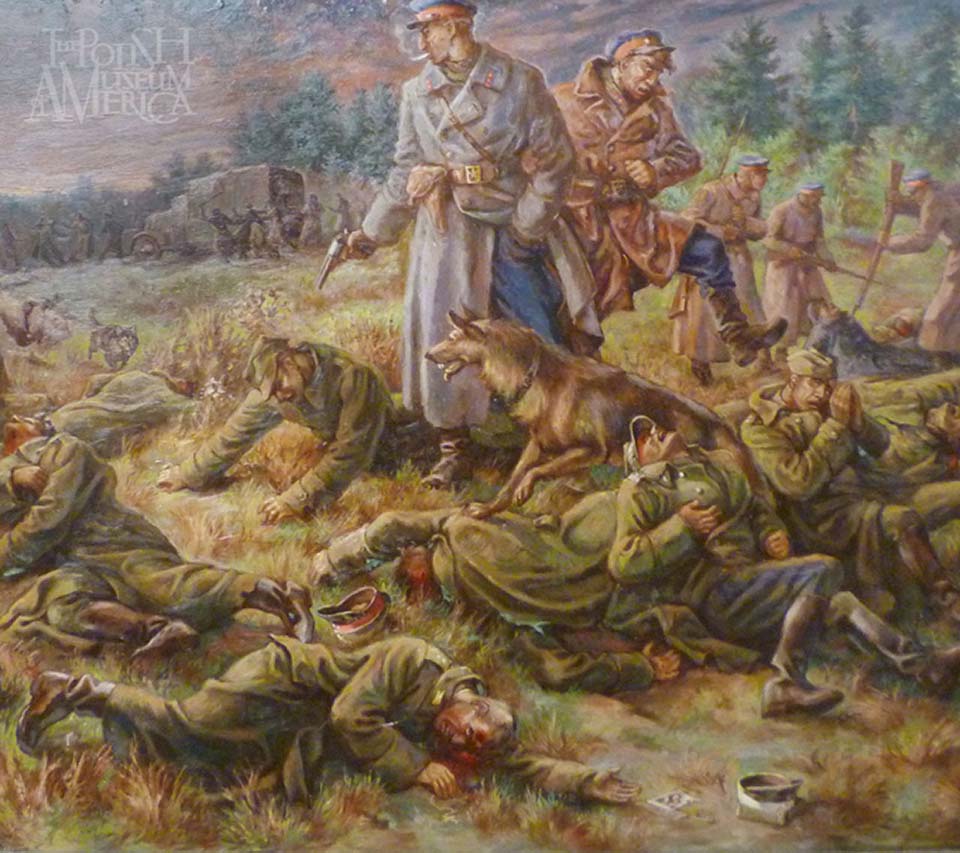April 13th marks the Day of Remembrance of the Victims of the 1940 Katyn Forest Massacre.
We solemnly commemorate the lives lost in one of the darkest chapters of history. The Katyn Massacre, orchestrated by the NKVD, claimed the lives of thousands of Polish POWs, including military officers and policemen and members of Polish intelligentsia with a shot to the back of the head.
The term ‘Katyn massacre’ refers to the execution in the spring of 1940 of almost 22,000 people: Polish prisoners of war in Katyn, Kharkov, Kalinin (Tver), Kozelsk, Starobielsk and Ostashkov as well as prisoners (soldiers and civilians), in different places of the Soviet Ukraine and Belarus republics. This barbaric act was based on the decision of the Soviet authorities, namely the Political Bureau of All-Union Communist Party (Bolsheviks) of March 5, 1940.
The commonly used expression referring to the simultaneous murders at many locations includes only the name of one of them, where the bodies of the officers were buried. This is connected with the fact that, for almost half a century after these tragic events, knowledge about people taken into captivity or arrested and finally murdered, was limited to the information of the executions in Katyń.
As we honor the memory of those who perished, let us also reflect on the significance of preserving historical truth and fostering understanding among nations. May the victims of Katyń never be forgotten, and may their legacy inspire a future of peace and solidarity.
===
13 kwietnia przypada Dzień Pamięci Ofiar Zbrodni Katyńskiej.
Uroczyście wspominamy życia ludzkie utracone w jednym z najciemniejszych rozdziałów historii. W Zbrodni Katyńskiej, zaaranżowanej przez NKWD, zginęło brutalnym strzałem w tył głowy tysiące polskich jeńców wojennych, w tym oficerowie i policjanci oraz przedstawiciele polskiej inteligencji. Termin „Zbrodnia Katyńska” odnosi się do rozstrzelania wiosną 1940 r. prawie 22 000 osób: polskich jeńców wojennych w Katyniu, Charkowie, Kalininie (Twer), Kozielsku, Starobielsku i Ostaszkowie, a także więźniów (żołnierzy i ludności cywilnej) w różnych miejscach sowieckiej Ukrainy i republik białoruskich. Podstawą tego barbarzyńskiego czynu była decyzja władz sowieckich, czyli Biura Politycznego Wszechzwiązkowej Partii Komunistycznej (bolszewików) z 5 marca 1940 r.
Powszechnie używane określenie Zbrodni Katyńskiej odnoszące się do jednoczesnych morderstw w wielu miejscach zawiera jedynie nazwę jednego z nich. Wiąże się to z faktem, że przez niemal pół wieku po tych tragicznych wydarzeniach wiedza o osobach wziętych do niewoli lub aresztowanych i ostatecznie zamordowanych, była ograniczona do wiadomości o egzekucjach w Katyniu.

